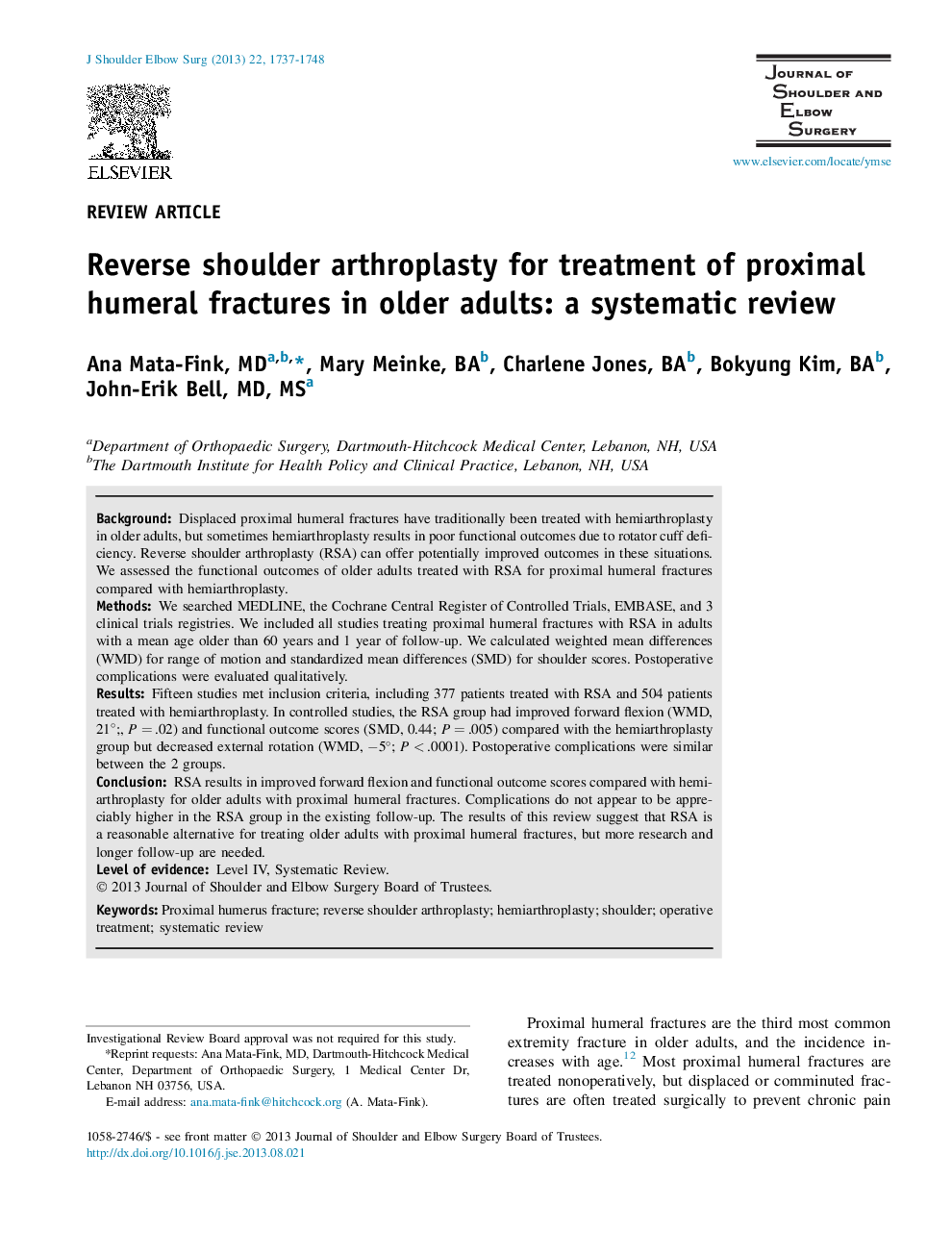| Article ID | Journal | Published Year | Pages | File Type |
|---|---|---|---|---|
| 4073301 | Journal of Shoulder and Elbow Surgery | 2013 | 12 Pages |
BackgroundDisplaced proximal humeral fractures have traditionally been treated with hemiarthroplasty in older adults, but sometimes hemiarthroplasty results in poor functional outcomes due to rotator cuff deficiency. Reverse shoulder arthroplasty (RSA) can offer potentially improved outcomes in these situations. We assessed the functional outcomes of older adults treated with RSA for proximal humeral fractures compared with hemiarthroplasty.MethodsWe searched MEDLINE, the Cochrane Central Register of Controlled Trials, EMBASE, and 3 clinical trials registries. We included all studies treating proximal humeral fractures with RSA in adults with a mean age older than 60 years and 1 year of follow-up. We calculated weighted mean differences (WMD) for range of motion and standardized mean differences (SMD) for shoulder scores. Postoperative complications were evaluated qualitatively.ResultsFifteen studies met inclusion criteria, including 377 patients treated with RSA and 504 patients treated with hemiarthroplasty. In controlled studies, the RSA group had improved forward flexion (WMD, 21°;, P = .02) and functional outcome scores (SMD, 0.44; P = .005) compared with the hemiarthroplasty group but decreased external rotation (WMD, −5°; P < .0001). Postoperative complications were similar between the 2 groups.ConclusionRSA results in improved forward flexion and functional outcome scores compared with hemiarthroplasty for older adults with proximal humeral fractures. Complications do not appear to be appreciably higher in the RSA group in the existing follow-up. The results of this review suggest that RSA is a reasonable alternative for treating older adults with proximal humeral fractures, but more research and longer follow-up are needed.
